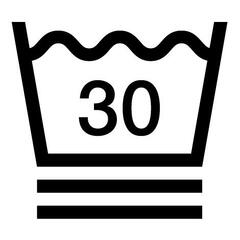What type of padding is used to give my jacket warmth?
Recognized for their high thermal insulation, down and feather also provide an excellent weight/warmth/compression ratio. The warmth provided comes from the combination of the weighting of down/feathers and the filling power of the jacket. This helps to trap air and insulate you from the cold. (Padding 75% down and 25% feathers in the body, recycled 7.1 oz/m² fill on the shoulders).
Which components added to the padding give it warmth?
In addition to your jacket's lining, the cuffs, snow skirt, waterproof zippers, high collar, and hood adjustments keep the warm air inside and prevent cold air from getting inside.
What is a membrane and what's it for?
The membrane is a very thin component applied to the inner surface of the outer fabric. This hydrophilic component prevents water from seeping in while wicking away the perspiration produced by the body. The membrane is essential when it comes to staying warm and dry.
How is the water resistance of a jacket measured?
The resistance of a fabric is measured by the height of a water column in mm that can be supported by the fabric (test based on the ISO 811 standard). The higher the pressure, the more waterproof the fabric. A fabric with a waterproof rating of 10,000 mm is therefore resistant to the pressure exerted by a 10,000 mm column of water.
Which parts of the jacket protect me from bad weather?
The 900 jacket was rigorously developed and assembled to stop water from getting in and to prevent wind chill, so you can brave the bad weather (rain, snow, wind, etc.). To check its water-resistance, this jacket was placed under a special shower, to reproduce the conditions faced by a skier. We have checked the waterproofness of this product in use in various weather conditions over several days.
Why is water-repellency needed for my jacket?
The water-repellent property of a fabric is its capacity to make water run off its surface without absorbing it. This jacket features water-repellent components that extend its weather resistance. The fabric is made water-repellent by treating its outer surface. However, this property may deteriorate with use.
How to restore your jacket's water-repellent properties?
Remember that water repellency can be restored. To do this, you can use a waterproofing spray (sold in our stores): spray the product evenly over the entire garment, then allow to dry for 10 to 12 hours).
What is a "breathable" jacket?
This garment wicks away the water vapor produced by your body when exercising. To see if a fabric is breathable, its resistance to evaporative heat (RET) is measured in a standardized ISO 11092 test. The lower the RET, the more breathable the fabric. The 900 jacket has a RET of 12. However, it's the technical solutions (zippers, vents, mesh) Wed’ze uses that reduce the condensation inside the garment and maximize breathability.
What is the cut of the 900 jacket?
Regular fit. The jacket has sides that fall straight and remain parallel without trying to follow the shape of your chest. The inner volume lets you wear this jacket with a 1st and 2nd technical layer.
How to dress to stay warm on the slopes?
To keep warm and dry, just apply the 3 technical layers rule:
- Layer 1 or 2nd skin, to stay dry.
- Layer 2 or an insulating layer, to keep the heat in.
- Layer 3 or a protective layer, to protect against bad weather.
Since the 900 Warm jacket is very warm, we would only advise you wear it with a 2nd layer in case of extreme cold.
In case of a fall, how can I prevent snow from entering?
The snow skirt is a protection system at waist level that closes with press studs at the bottom of the ski jacket. The snow skirt, as well as the adjustable cuffs, prevent the entry of snow and drafts during practice and especially in case of a fall.
How to wash my jacket?
* Wash the jacket inside-out
* Machine wash at 86°F, Delicate cycle with little detergent and without fabric softener.
* Put 2 clean, ideally white, tennis balls in the drum of the washing machine.
* Perform a 2nd or 3rd rinse cycle to make sure that any washing product that remains from the previous wash has been eliminated.
How do I dry my jacket?
Dry in a tumble dryer (strongly recommended)
* Use a gentle or delicate cycle.
* Be sure to select a gentle spin cycle.
* Dry on several long cycles to dry completely.
* Between 2 cycles, shake the down to break up the clumps of feathers that form during washing.
If you do not have a tumble dryer, the process is longer. (drying can take 1 to 2 weeks on a dry and flat surface). Make sure you pat the jacket to avoid feather balls (at least 4-5 times)
Where do the feathers come from?
Our traceability system allows us to guarantee the origin of the feathers in accordance with our commitment to use responsible materials. Our suppliers are committed to using only feathers that come from ducks that are raised for their meat and plucked after slaughter.
http://developpement-durable.decathlon.com/faq/
A score for comparing the products' environmental impact
The environmental impact of the product is calculated over its entire lifecycle and using various indicators. An overall ABCDE score is given to help you easily identify products with the best environmental performance by comparing products of the same type (T-shirts, pants, backpacks, etc.).
Decathlon is committed to displaying the environmental information of its products.
For further information: http://sustainability.decathlon.com/




